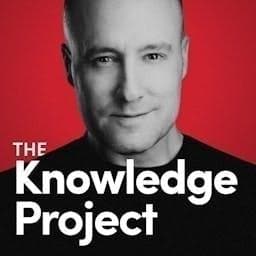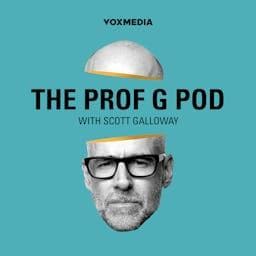Reinvented innovation sprints for lasting culture change on product management teams
Watch on YouTube
TLDR
This episode of Product Mastery Now features a conversation with Sarah Stabelfeldt, VP of Innovation, and Melissa Pierson, Innovation Programs Manager at Schreiber Foods, about building high-impact innovation processes within large organizations. The discussion centers on Schreiber Foods’ journey to revitalize their innovation culture, launch The Hatchery coaching and innovation program, and successfully integrate AI tools to accelerate value creation. Key takeaways include how to foster cross-functional collaboration, strategies for maintaining innovation momentum after sprints, and practical ways to leverage AI to free teams for more meaningful, creative work.
Introduction
Product innovation processes are quickly improving. While this is great news, most organizations don’t even have a well-defined process. In this discussion, we’re exploring how to build an innovation engine that works, delivering value to customers and to the organization, with real AI integration that cuts development time from months to weeks or even days. If you’ve ever felt like your innovation sprints lose momentum, your stakeholders resist change, or you’re not sure how to practically use AI beyond the hype, you’re not alone. These are the challenges that led a $7 billion food company to reimagine how they innovate. And, we’ll learn about the innovation approach they created, called The Hatchery, including the AI tools they use.
Our guests are both with Schreiber Foods. Sara Stabelfeldt is the VP of Innovation and was previously an Innovation Leader at Kimberly-Clark. Melissa Pierson, is the Innovation Programs Manager, who previously worked in quality systems and also held quality positions at Eli Lilly.
Summary of Concepts Discussed for Product Managers
Schreiber Foods’ Innovation Transformation
Schreiber Foods is a $7 billion customer-branded food company that manufactures cheese, yogurt, cream cheese, and aseptic beverages for retailers and food service. When CEO Ron Dunford took over in 2019, he initiated a transformation to accelerate growth by amplifying innovation capability. This led to a comprehensive innovation ecosystem including core innovation (supporting existing business), adjacent innovation (new revenue streams), digital labs, corporate venture capital, and The Hatchery—an innovation approach that helps companies build practical innovation cultures and programs.
Building Culture Through the Snowball Effect
Sarah describes building culture as akin to building a snowball, an analogy coined by her colleague Erin Faulk. You can’t force culture by pushing too hard or it crumbles. Instead, you form it and let it roll, responding to the organizational climate, context, and people. Culture is built through repeated actions that demonstrate what’s valued, not just through messaging. This approach recognizes that innovation culture must adapt to its environment rather than being imposed from above.
The Hatchery Innovation Framework
Sara explains that The Hatchery is an innovation approach developed at Schreiber Foods to equip product managers and innovators with the tools, structure, and approach to maximize culture and impact. The program alternates between learning and doing to help teams develop, practice and embed mindsets, behaviors, and technical skills in the organization to reignite innovation journeys.
Practically implementing the Hatchery involves strategic coaching and mentoring, creating a culture of innovation, using an innovation toolbox, and running innovation sprints.
Building Innovation Culture
Melissa explains that The Hatchery helps teams believe that complex problems can be solved. Product teams that participate in sprints often return to their jobs with a new mindset to find different ways to solve problems.
Product Innovation Sprints
In The Hatchery framework, cross-functional teams participate in week-long innovation sprints, applying best practices from a variety of innovation methodologies. These sprints begin with determining what the business or team is trying to achieve and identifying and quantifying the problem that is holding them back. Next, the team approaches the problem with empathy, trying to understand how other business units experience the same problem. Understanding others’ pain points allows the organization to share a collaborative mission. Next, the team discusses Jobs-To-Be-Done or “How might we” statements to unlock progress. They then work on idea generation, prioritization, and prototyping. The outcome of the sprint is a set of ideas and clarity on the next steps.
Ending the Sprint with an Open House
The Hatchery sprints end with an open house, during which the team shows their work in progress to others from across the organization who help build ideas and give feedback.
Sustaining Momentum After Innovation Sprints
One of the biggest challenges in innovation is maintaining energy and progress after the initial sprint ends. The Hatchery address this by building momentum during and after the sprint. The sprint has an executive sponsor for the sprint and is strategically aligned to a business imperative. Innovation champions on the team have a passion for innovation and the mindset and skillset to help the team continue to implement what they learned during the sprint. The coaches who lead the sprint stay involved to help move the project forward.
Real-World Example: Industrial B2B Service Model Transformation
An organization in the industrial B2B space had an ambitious concept that would redefine their service model and expand market reach. When they presented the big idea, experienced stakeholders immediately became cautious, filtering the concept to protect the business from perceived risk, causing the market-moving idea to get chipped away into tiny changes that would solve nothing. Rather than shrinking the idea itself, Melissa’s team went back to the core vision and instead chunked down the steps to achieve it. They identified critical assumptions that could prove out the whole idea or potentially invalidate it, then tested those narrow pieces through overnight consumer testing, AI persona vetting, and isolated manufacturing process trials. By building buy-in through evidence and data from these quick, believable steps, they maintained the inspiration for the big vision while making it doable and realistic.
Strategic AI Integration
Sara and Melissa use AI tools to accelerate innovation. They have realized that unlocking AI’s potential isn’t about the tool itself but about learning how to interact with it. They’ve built a repeatable prompt library with persona roles, mindsets, specific innovation theory context, and relevant constraints. Their use of AI cultivates thought partnership, leveraging the unique strengths of both humans and AI.
The team’s mantra is “It’s not what AI gives us; it’s what it frees us to become.” When AI handles data synthesis, pattern recognition, and quantitative analysis, innovators can focus on empathy, intuition, emotional depth, cultural context, and nuanced judgment—the messy, fun parts of innovation. They use prompts to explore how ideas would be solved 10 years in the future, historically, or in other cultures.
The team uses multiple tools including Gemini, Copilot, and Aucctus, a set of AI agents trained on innovation theory that enables teams to chat with consumer personas.
Useful Links
Learn more about The Hatchery and how it could help your organizationConnect with Sara and Melissa on LinkedInInnovation Quotes
“If you want to know where your heart is, look to where your mind goes when it wanders.” – Walt Whitman
“Tell me what is it that you plan to do with your one wild and precious life.” – Mary Oliver
Application Questions
How does your organization currently ensure that ideas generated in sprints or hackathons have executive support and resources to move forward?What cultural blockers to innovation (e.g., silos, blame, inertia) do you notice, and how might you encourage greater internal empathy?In what ways could you leverage AI to accelerate or strengthen your product development process—where could it free you for more creative or strategic work?What does your sprint “end” look like, and how might an open house-style presentation change the energy and follow-through versus a formal report out?How do you identify and support innovation champions or coaches in your organization so that innovation momentum spreads beyond a dedicated innovation team?Bio
As Innovation Programs Manager at Schreiber Foods, Melissa leads initiatives that inspire the core and activate a culture of curiosity and experimentation. She brings deep experience in intrapreneurship, product development, and business model innovation. Melissa is also a driving force behind The Hatchery—Schreiber’s external innovation service provider—where she helps teams move beyond “innovation talk” into real action. Her work often explores how human-centered design and emerging technologies can work in harmony—amplifying creativity, accelerating learning, and unlocking meaningful, scalable impact. With a background spanning pharma, food, contract manufacturing, Lean/6-Sigma, and project management, she brings both structure and spark to the innovation ecosystem.
Sara Stabelfeldt is a strategic thinker with the skills of an engineer and the soul of the customer. As the Vice President of Innovation at Schreiber Foods, Sara inspires a team of serial intrapreneurs and business builders to dream big and unlock new growth engines in service of the company’s mission to Do Good Through Food.
Prior to Schreiber, Sara has a proven track record of leading innovation for iconic brands like Kleenex®, DEPEND®, and HUGGIES®. Samples of her work were featured in both Clayton Christensen’s time-tested book ‘Competing Against Luck’ and as a gift in the Emmy’s Swag Bag.
Sara’s passion for her work stems from her love of strategy and commitment to building talent. She approaches every challenge with a focus on fundamental consumer insights and technical innovation principles. But it’s not just theory. Her work is reflected in numerous patents and publications and can be found in millions of homes each and every day.
Thanks!
Thank you for taking the journey to product mastery and learning with me from the successes and failures of product innovators, managers, and developers. If you enjoyed the discussion, help out a fellow product manager by sharing it using the social media buttons you see below.



































